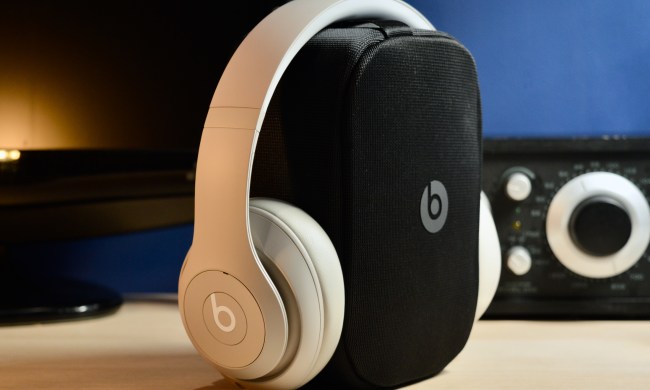
Ever stared out through a window that hasn’t been cleaned in a while? So long as you’re focused on what’s on the other side, you probably aren’t aware of the hazy film and dust that obscures your view. You can see the trees, grass, road signs, mountains – whatever – just fine right? But clean that window to a gleaming, streak-free shine and – wow– what a difference! Suddenly everything is more brilliant and vibrant; clarity is restored, and now looking through that same window at the same stuff is an entirely different experience.
Listening to music through an iPhone, iPod or any other mainstream device is a lot like looking out at a scene through that dirty window. You can hear the music just fine, so you’re probably not aware that what you’re listening to is being passed through “dirty” hardware before you hear it. But when you play the exact same music files through premium hardware that’s been designed to resolve music as clearly and accurately as possible, it’s like polishing that window to perfection. Suddenly you hear everything you’ve been missing and it becomes clear that your smartphone makes bass a little muddy, midrange a little cloudy and treble a bit fuzzy.
To get better-sounding music, you don’t really need to change the quality of the files you listen to any more than you need to make the trees outside greener; you need to change the hardware you’re listening through. That’s the real advantage that portable HD media players like Neil Young’s surprisingly popular Pono or iRiver’s Astell and Kern series bring to the table: better hardware.
… when you’re comparing two different versions of awesome, it’s hard to hear much difference.
Right now everyone is caught up in a pseudo-scientific row over the meaning and merit of things like bit depth, sampling rate and dynamic range, but what they should be talking about is stuff like Digital to Analog Converters (DACs) and amplification. The DAC, for example, performs the critical job of taking all the 1’s and 0’s in a digital audio file and converting them into the analog signal your headphones or speakers blast into the air as sound. Even with HD files and premium headphones, a crappy DAC means crappy sound. Using premium parts here can make even your old CD rips sound so fresh and alive, it’s as if you’d never really heard them before.
In a recent piece on CNET, Stephen Shankland discusses why some experts believe going beyond CD quality is pointless. It is an interesting discussion, certainly, but the headline, “Despite Pono’s promise, experts pan HD audio,” is misleading. It makes it seem as if, because the notion of HD Audio is questionable, then the Pono must be, too. The comments below reinforce that notion. Take Sactoguy018, for instance, who writes, ” … once both MP3 reaches 320 kilobits/second sampling rate and AAC reaches 256 kilobits/second sampling rate, the sound quality is good enough for most portable and car stereo playback. To hear the difference between this and the original Compact Disc requires stereo equipment most people can’t afford ...” Ironically, he points out in his own post what he’s missing for himself: The Pono is that equipment that people need in order to hear a difference.
In the comments on my own piece explaining the PonoPlayer, commenter Ross Aitken says, “When almost no-one can tell the difference between high bitrate MP3 and CD in properly controlled double-blind tests, I’m highly skeptical that this isn’t just more audiophile snakeoil.” While Ross brings up an interesting point about how the difference in quality between two different kinds of music files can be hard to hear for some, it would seem he isn’t taking into consideration the equipment playing back those files. In such a double-blind test, the same equipment was probably used to play back the different files. But I’m here to tell you that if superior electronics had been used to play back even the lower-quality files, I’m confident that a difference would have been heard. And not just a small one.
I’ve been listening to high-resolution audio files through high-end home audio equipment for the better part of 10 years. Over those years, I’ve performed a lot of comparisons, and I agree that it can be hard to discern a lossless copy of a CD from a modern 24 bit /192 kHz HD audio file. But that’s because I’m fortunate enough to be able to use the same high-quality gear to listen to two different versions of the same song. Some of the gear I have is so good, it makes everything sound awesome, and when you’re comparing two different versions of awesome, it’s hard to hear much difference.
But when it comes to making the leap from using a smartphone as a music player to using something built to play music well, like the Pono, the chasm in quality between the two is deep and wide. Take the modern use of USB DACs with computers, for example. The stock sound cards in most laptops and desktop computers is terrible. But take a little $99.00 USB DAC with a headphone amp built in, and watch your music transform. For most people who hear it, the difference is night and day. Perhaps that explains why products like Audioquest’s DragonFly USB DAC are so popular with mainstream users: You don’t have to struggle to hear the difference.
To be fair, the marketing teams behind the Pono deserve some of the blame for misdirected conversations in public forums. They’re the ones feverishly waving the 24-bit/192-kHz flag as the PonoPlayer’s premeire attribute. We understand why: Once the players have been sold, why not create an opportunity to collect some cash off the music that will fill them? But in doing so, the Pono project now finds itself in danger of falling victim to a confused public which only has a bickering audiophile crowd to turn to in order to understand what could be a new era in portable digital audio.
For the sake of the future of high-quality digital audio, let’s hope the PonoPlayer turns out to sound as good as it looks on paper. If it does, more people will buy in as the good word spreads. But if it turns out to be a disappointment, then HD-Audio could remain doomed to live on as a niche interest, no matter how many big-name industry players get behind it.



